Driver’s view: Fisher Farms’ Claas Axion 960 TT tractor
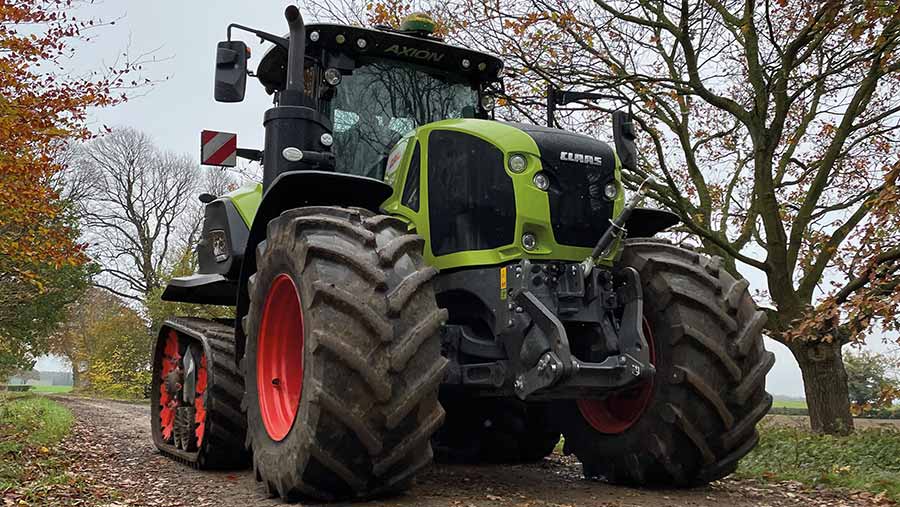 © Adam Clarke
© Adam Clarke After dropping a teaser about its development of a half-track Axion at Agritechnica 2017, Claas officially launched 355hp and 445hp 900-series Terra Trac machines in 2020.
Promising 15% more traction and 50% less ground pressure than its wheeled relatives, plus the ability to match them for ride quality, there’s a lot to like about the concept.
See also: £100k retrofit track kit saves the season for Durham grower
Claas Axion 960 Terra Trac
- Year 2021
- Engine 8.7-litre, six-cylinder FPT
- Max power 445hp
- Torque 1,860Nm
- Transmission 40kph Cmatic CVT
- Weight 16,200kg
- Rear lift 11,250kg
- Approximate on-farm price £337,000
These features caught the eyes of Fisher Farms director Will Fisher and his cousin, Rob, who, together with their fathers, run day-to-day proceedings across the business’s two sites in north Nottinghamshire and East Yorkshire.
Farmers Weekly paid a visit to the main Goldthorpe Farm base near Worksop to see how they’ve got on with their new 445hp 960 Terra Trac since its delivery last February.
Farm facts
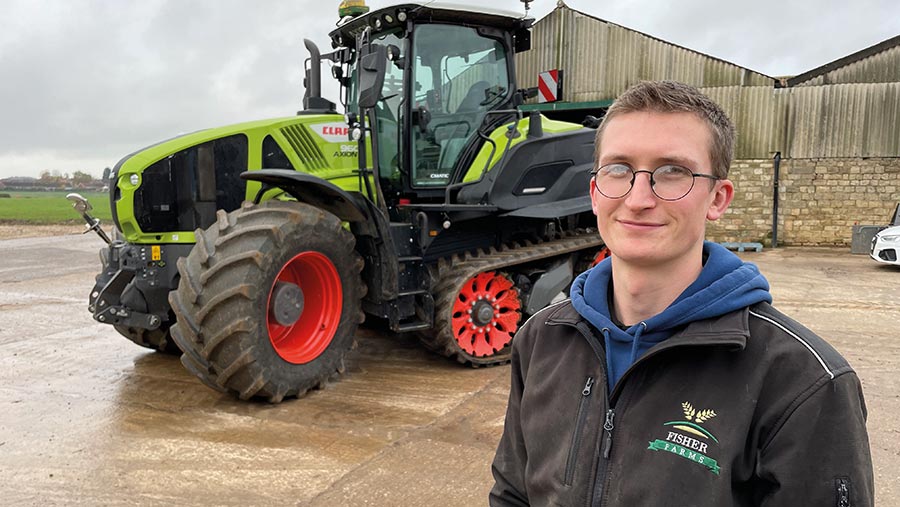
Rob Fischer © Adam Clarke
- Size 1,134ha (810ha at Goldthorpe Farm, near Worksop, Nottinghamshire, and 324ha at Northfield Farm, Huggate, Yorkshire)
- Crops 200ha of processing and pre-pack potatoes, plus winter wheat, barley, winter oilseed rape
- Soil types Blowaway sand to clay at Nottinghamshire site, all chalkland in Yorkshire
- Other tractors 2017 John Deere 8370R, 2018 6215R, 2019 6215R and 2020 6215R
Why did you pick an Axion 960 Terra Trac?
For our high-horsepower tractor, we’ve had three different Xerion models over recent years – a 3800, 4500 and 5000 – that have been used for primary and secondary cultivations.
Jobs included pulling Philip Watkins’ Quad-Till one-pass cultivator, which deals with all the barley and oilseed rape stubbles and ex-potato land, and its Incorporator disc harrow to work down ploughed ground.
Prior to potato planting, it sat on a four-bed ridger and operated a three-bed Scanstone Power Ridger ahead of the destoners. It also did some work with a five-leg Cousins subsoiler where needed.
With the two farms spread so far apart and a relatively large acreage to manage, we needed something powerful, but with a greater degree of versatility than the Xerion could offer.
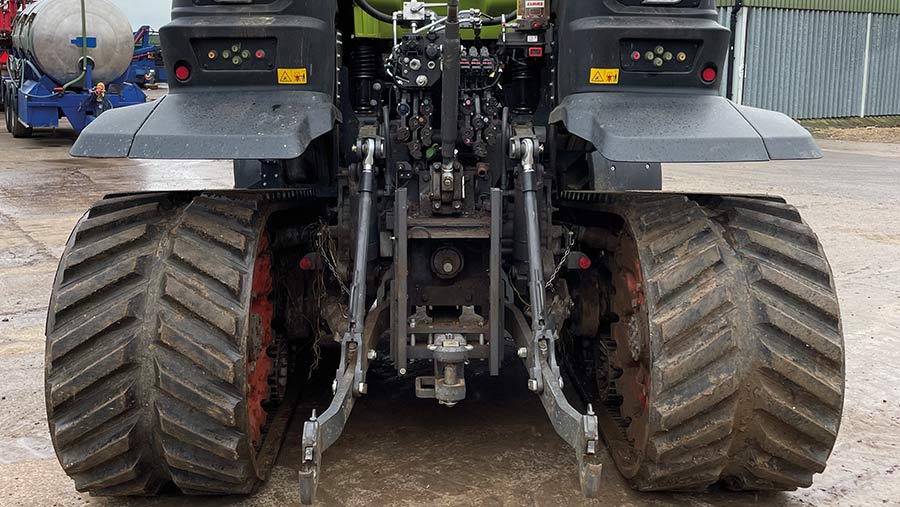
© Adam Clarke
We spend a lot of time on the road and, for that, Xerions and Quadtracs are huge and impractical.
There are several traffic calming islands near the Worksop farm, and the Xerion bounces over every single one.
There are also plenty of small fields at Worksop, which can make turning on a headland tricky.
So, while all our Xerions have worked well and done exactly what we’ve asked of them, the Axion offers similar horsepower in a much smaller and narrower frame – with more grip and less compaction.
Did you look at other options?
We weren’t interested in going down the Case Magnum Rowtrac route.
We have a good relationship with the local Case dealer and would be keen to do some business, but we’ve never gelled with the brand and had some difficulty keeping its tractors running in the past.
The John Deere 8RX came for a trial, but it was considerably more expensive than the Axion and the closest model to our 960 power-wise is 410hp.
It also comes with a powershift rather than stepless transmission, which is no good for slow jobs such as bed-tilling, and we like the Claas Terra Trac system.
We’ve had four Lexions on tracks now, it’s tried-and-tested technology, and we’ve had very few issues with it on the combine.
How has it performed?
The improved traction and lower compaction risk with the Terra Trac is noticeable.
With the Xerion, wheel slip was often at 20% for draft work on our sandy land and the tractor would sometimes bunny-hop, but with the Axion it’s steady at about 5-6%.
In our potato crops, we plant two beds and lift four, so it’s very important that everything matches when ridging up.
The Xerion’s tyres used to flex and wobble laterally and, because of the bunny-hopping and poor draft control, depth accuracy wasn’t as good as it could be.
It also had the habit of kicking itself out of line when working around bends with the ridger in four-wheel steer, though that was more of a guidance issue.
The Axion keeps nice and straight and holds itself up well on worked ground. We’ve got functioning draft control too, so it’s making a good job of our most important tasks.
Being relatively compact for a high-horsepower tractor means it is easier to manoeuvre into corners and put it exactly where you want it, too.
And where changing implements on the Xerion could take up to half an hour because of limited visibility to the link arms and drawbar – which often meant you needed another man around – with the Axion it only takes about 10 minutes.
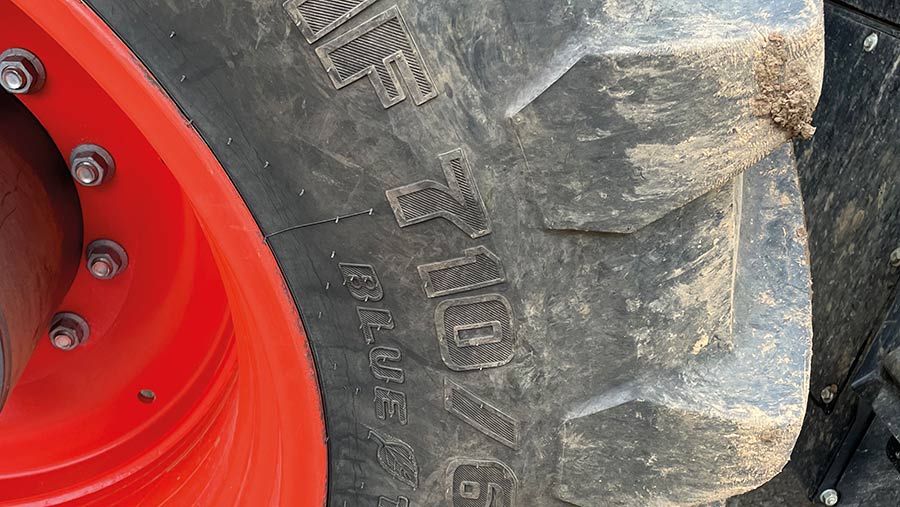
© Adam Clarke
It’s got a solid drawbar, but you can use the track suspension to shift the back of the tractor up and down by quite a distance so, handily, if you need to pick up an implement that’s sat low, you don’t need a forklift.
We haven’t noticed the horsepower difference between our last Xerion 5000 (530hp) and the Axion (445hp) in the field, and the transmission in cruise control is very smooth.
Fuel use at full chat is about the same for both (70 litres/hour), but the Axion uses a bit less moving around.
The only major gripe is the steering, which is its Achilles’ heel.
The steering assistance feature does help, but it could be better, and we need to carry more weight on the front than we would like – typically an 1,800kg pack – to improve traction from the tyres (710/60 R34s).
In terms of issues, the fuel gauge didn’t work at the start, and we managed to run it out of diesel. It has also needed a couple of ECU updates, but there was no significant downtime from those.
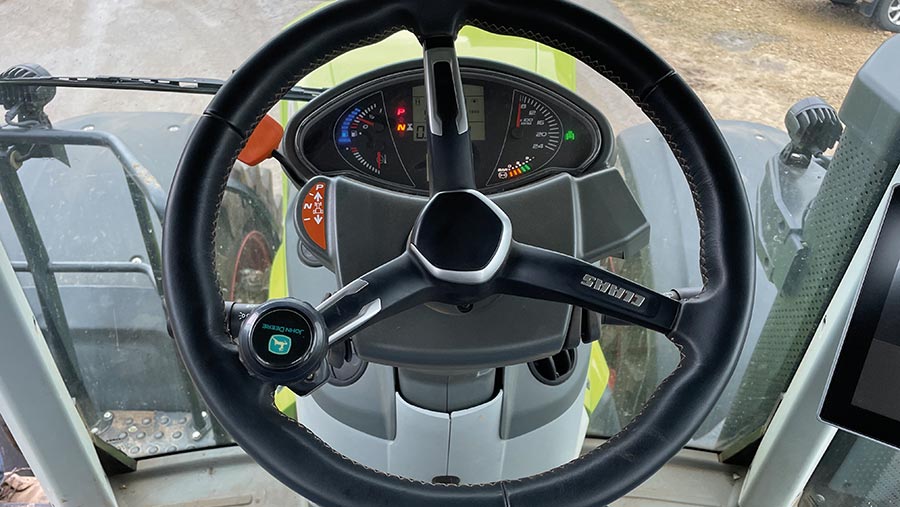
© Adam Clarke
What’s the ride and comfort like?
The track suspension on the Axion far exceeds anything else on the market, including the 8RX, and we’d go as far to say that it’s smoother than a wheeled tractor on the road.
As a result, we wish it would do 50kph rather than its 43kph top speed because you still wouldn’t feel a thing from the seat.
Compared with the driving position of other big tractors, where you feel perched on top, you seem to be at the heart of the Axion, much like any small- or mid-range tractor.
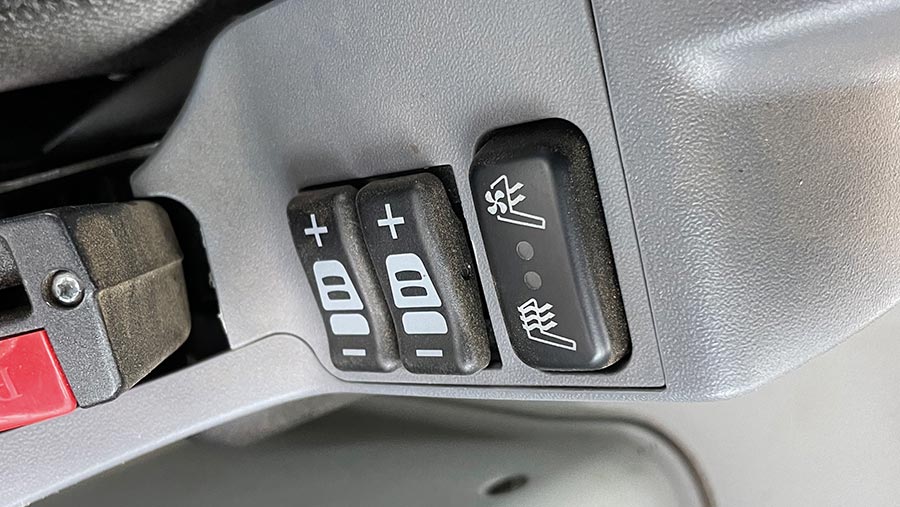
© Adam Clarke
Other perks include an LED light kit, which is very good for visibility, and a leather steering wheel. The ventilated seat is also a nice feature – particularly last summer.
The cab is a pleasant place to be, but it’s not as good as our John Deere tractors, which have more space and a better quality of finish.
Noise levels are also a bit higher in the Claas, which is noticeable when you quickly move between the two brands.
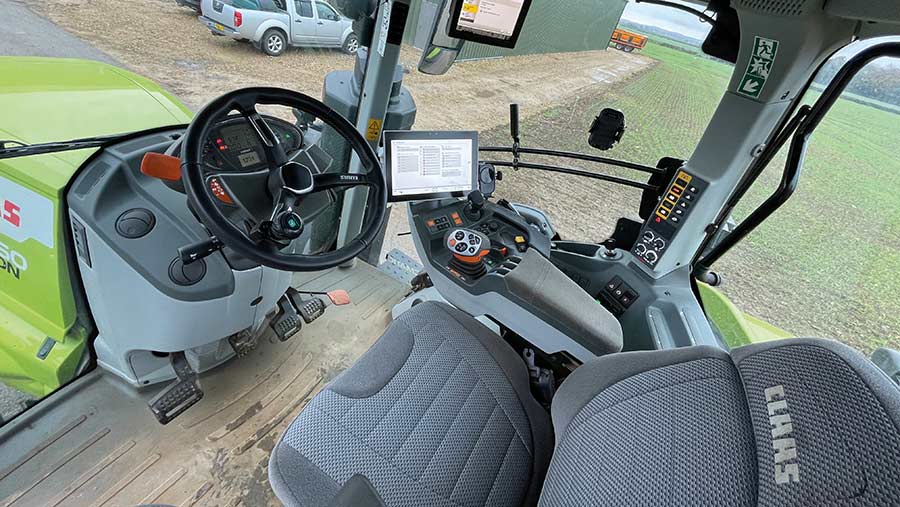
© Adam Clarke
It has a Cebis 12in touchscreen display, but we use the same John Deere RTK steering system across the fleet.
The older Claas guidance systems were not good, and the newer Trimble-made version wasn’t available when we ordered the tractor.
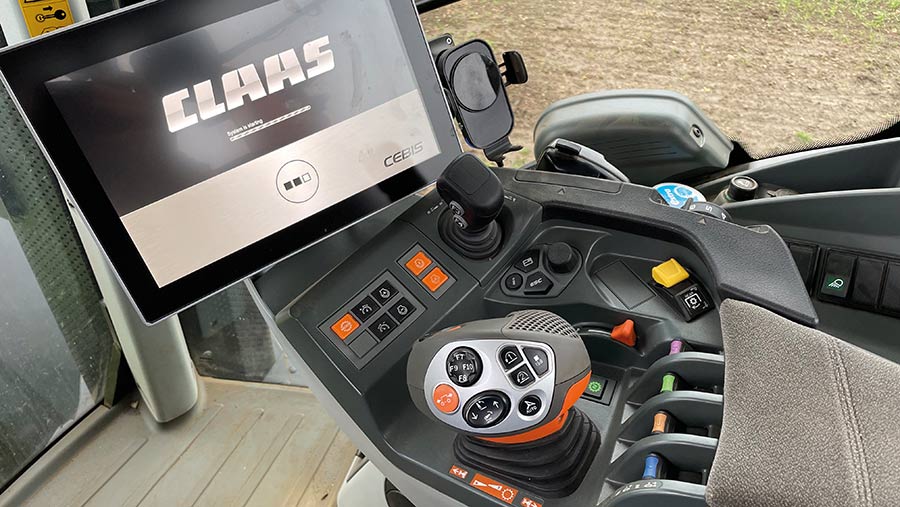
© Adam Clarke
We run John Deere Operation Center software too.
This makes it easier to map out fields if we rent some new land and means we can upload the map with A-B lines so they are available to every machine straight away.
The only cab issues are the position of the left-hand mirror, which is set a long way back so it’s out the way of the door, and the lack of outside storage for tools and spares.
You can get a small toolbox in the compartment on the steps, but when it’s open it blocks cab access.
All in, we think it’s been worth the investment for our needs, which are primary and secondary cultivations. However, if you want something to sit on a Vaderstad drill, there might be better options.
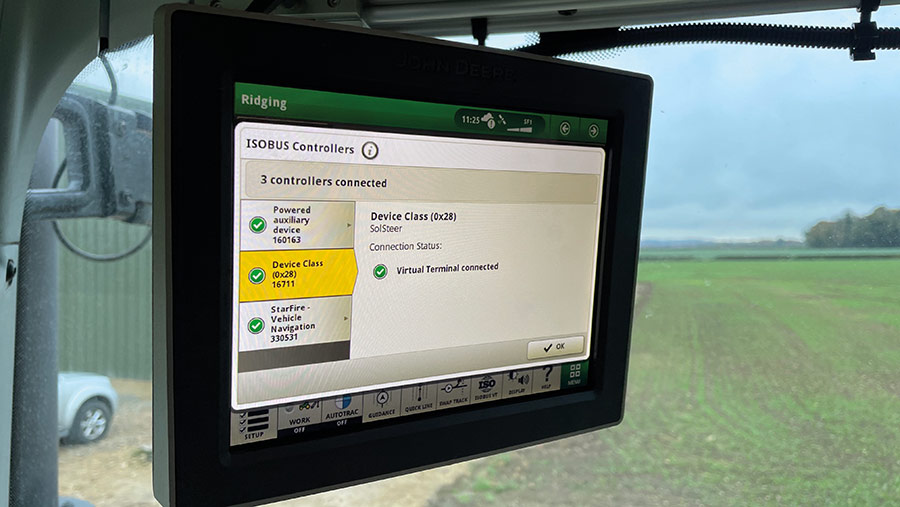
© Adam Clarke
Likes and gripes
✔ Track suspension system makes for smooth road travel
✔ Versatile for a high-horsepower tractor
✔ Improved traction
✔ Lower soil compaction risk
✘ Limited steering lock
✘ Lack of storage
✘ Cab noise
✘ Wing mirror placement

